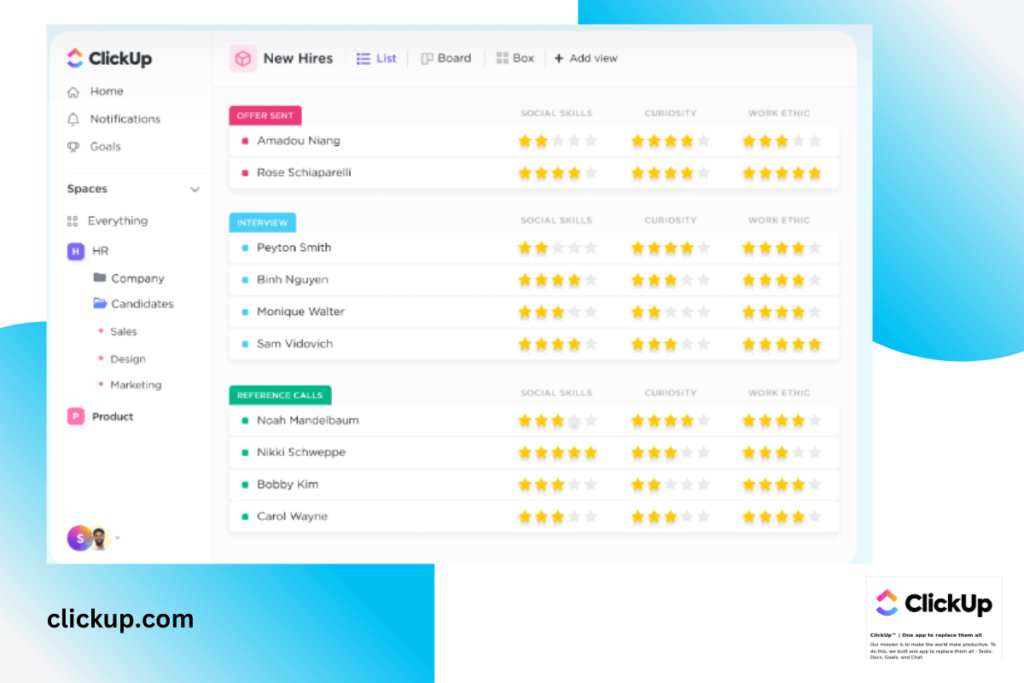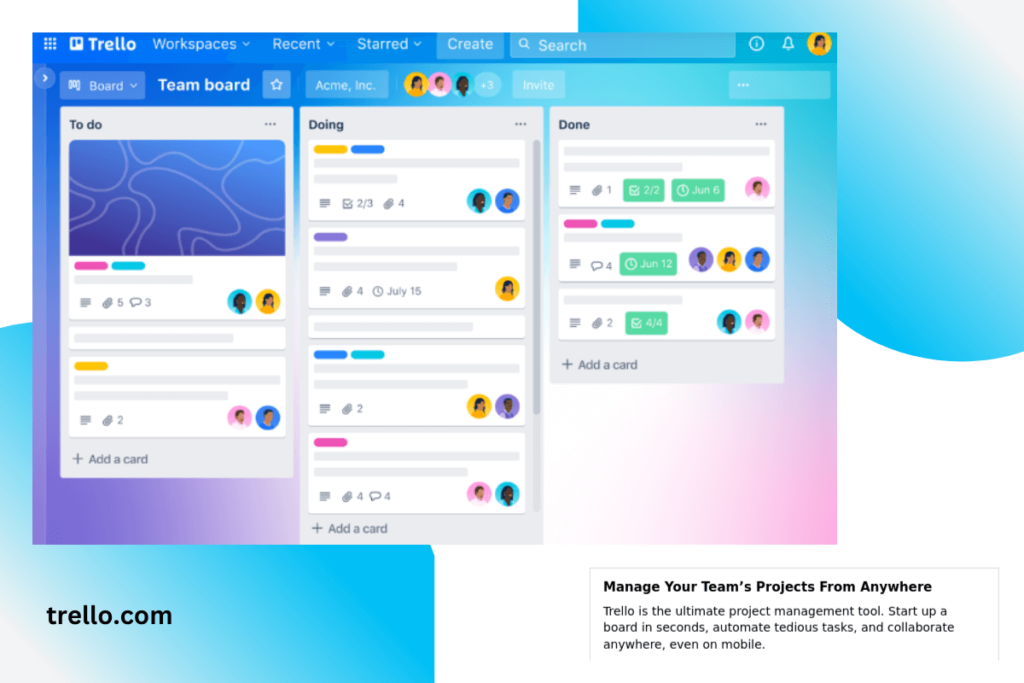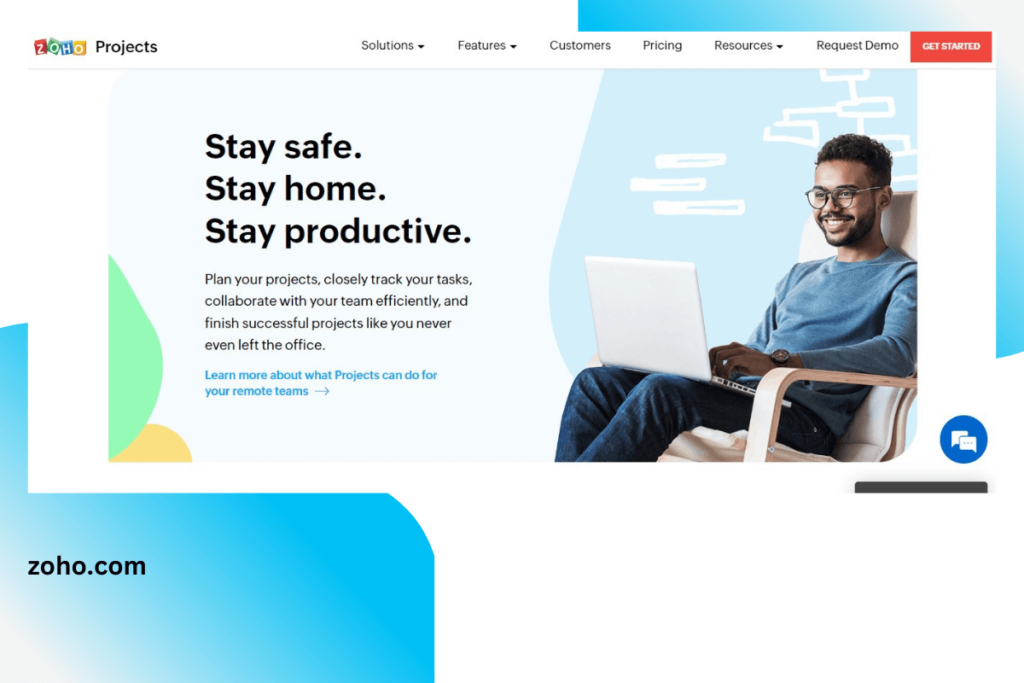RELATED: Best Project Management Tools For Multi-Company Departments | Retail Task Management Platforms | Best Competitors & Alternatives For Asana
Developing real estate is a complex, multi-step process that can take years to progress from planning to completion. Real estate development begins with a plan, and requires progression through a number of concrete and complex steps. Developers must involve government entities, private companies, contractors, subcontractors, utilities, building inspectors, code enforcers, and other actors. With this bevy of moving parts, development projects can easily slide into chaos and disarray. It is apparent that real estate developers need tools that can help them keep track of this plethora of workers and processes to maximize their efficiency and their profitability.
What to look for in project management software
Project management tools act as a unified hub for all manner of communications and tasks required by a project. Ideally, project management software will include task management, including the ability to assign tasks to team members, collaborate on those tasks, and provide transparency to the status of these tasks to other team members. Other essential functions of task management software include:
· Planning and Scheduling
A critical feature for any project management software is schedule management. Especially critical for real estate developers, good planning and scheduling tools allow you to coordinate who will be on site and when. This can help you avoid problems such as crews appearing at the wrong site or the wrong time, inspectors arriving before completion of work, permits being submitted out of turn, or other schedule-related bungles that can slow down a development project.
· Communication
Communication tools allow you to easily send and receive messages with your team from inside the project management application. This avoids the hassles of lost or misfiled emails, missed texts, or verbal miscommunications over the telephone. Applications often include chats, forums, or boards where teams can communicate together and have the communications tied to specific tasks or projects. It is easier to click on a task and view the latest comments than it is to dig through your email archive, or to interrupt your team to request a status report.
· Document Management
Whether it is sharing of blueprints, permits, surveys, or sales materials, document management is immensely important. Some software only offers document storage; other software allows team members to open and markup documents within the tool. This saves you from opening another application, and allows all team members to instantly see the most recent iteration of their document – think of how multi-contributor tools work in Google Workspace.
· Reporting
Any project manager needs access to detailed reports to understand the current status of their work. Good software for project management often includes built-in reporting tools that can generate data on budget, contracted hours, overtime, overall progress, bottlenecks, and other factors. This data helps drive informed decision-making to keep your project on track.
· Resource Management
Task saturation can be a productivity killer. As an example, if one senior engineer is responsible for too much work, they can become a bottleneck and obstruct progress despite working at their normal pace. It is therefore important to ensure that your team is adequately tasked but not overworked. Resource management tools can flag projects at risk of falling behind and recognize when individuals are overutilized, helping you make informed decisions when tasking your team.
· Budget Management
The budget is essential: no money, no project. Overspending or poor management of costs can sink the viability of a project. It is critical that project managers keep a watchful eye on their budget allotments and requirements. Good project management software will feature tools allowing you to monitor expenditures and track who is spending what, where.
Free project management software tools for real estate development
The market for project management software is diverse, and companies have a wide selection of products offering some combination of these features. Here, we have compiled a list of project management tools that real estate developers will find useful. Some of these tools require subscription or maintenance fees; but the utility they offer is worth the cost.
1. ClickUp

ClickUp is designed to help users manage complicated processes. As one of the best-known and most widely utilized project management platforms on the market, ClickUp should be high on your list of tools to consider. One especially nice feature of ClickUp is that it is open-source, meaning that it is free to use, transparent, secure, and supported by a large international community of developers.
Features
ClickUp includes access to a robust set of features. In terms of task management, ClickUp allows users to build, assign, and manage tasks, subtasks, and checklists. Tasks can be organized into Gantt charts to help users understand task status and dependencies. Users who prefer simple calendars will find ClickUp’s integrated tools visually appealing.
Document management tools allow ClickUp users to create wikis and edit documents in-application, letting your team build a knowledge base. Chat features allow users to collaborate on documents or tasks without leaving the application. Finally, built-in reporting tools help project managers keep track of their teams.
ClickUp integrates easily with commonly used tools such as Slack, Dropbox, and G-Suite.
Is it free?
ClickUp’s free version comes with access to 100 megabytes of storage, unlimited members and tasks, and a two-factor authentication feature to keep your projects secure.Reviewers say that the free version is highly capable and includes the features necessary for project management. ClickUp pride themselves on having the most usable and most useful free project management application on the market, earning them the top place in this article.
There are two paid tiers: the $5 per user per month tier offers access to application integrations, dashboards, guest features, and other customizations, and the Business version ($9 per user per month) includes Google single-sign on, extensive dashboard widgets, improved automations, advanced time tracking capabilities, and workload management.
Impression
ClickUp is a very capable and well-liked tool for project management. Real estate developers will find many useful features in the free version which will allow them to manage the complex tasks involved in planning, designing, and constructing buildings.
2. Trello

Strictly speaking, Trello is more of a collaboration and task-management tool than a project management suite per se, but it is immensely popular and very versatile. Built on a Kanban-board, card-based task tracking system, Trello is an excellent tool for keeping your project organized, transparent, and on-track.
Features
Trello revolves around their Kanban board. The board allows users to plan, schedule, and prioritize tasks by assigning due dates, labels, checklists, attachments, and more to a card. Cards can be assigned to individual or multiple team members, and a comment-style Activity Stream in the cards will help keep the team informed about task status.
Users are allowed to select a free “powerup” from Trello’s list of available options. Many firms enjoy the Shared Calendar powerup, which allows the team to view project status on a traditional calendar. This calendar includes tasks, due dates, and task owners. Other handy powerups include Time Tracking features, which enable your team to track time spent per task.
Document sharing can be achieved using the Attachments function within cards. Files can be attached to cards, which allows multiple team members to engage with the same document or file as needed.
Trello does not include any native budgeting or invoicing features, so if this is an absolutely essential feature for your project management software, you will need to find an alternative option such as ClickUp.
Is it Free?
Trello is available in a number of tiers. The free tier of Trello allows you to have unlimited personal Kanban boards, cards, and lists. Users may have up to ten team boards, with one free powerup apiece. The free version limits file attachments to 10mb each.
For users who need more, Trello Business Class begins at $9.99 per user per month. This upgrades you to a 250mb/attachment size limit, unlocks priority customer support, enables custom board backgrounds, and removes the cap on team boards. Users can also integrate applications, run 1,000 automations per month, and use customizable fields to expand the utility of the product. Enterprise features include unlimited automations and personalized onboarding.
Impression
While not as feature-rich as some project management suites, Trello is highly competitive based on their ease of use. Even very basic users can easily understand how to manage tasks, and the availability of mobile applications helps your team in the field keep updated. Trello is an excellent option for real estate developers who need an application to help manage their projects.
3. nTask

For real estate developers who are managing smaller projects, nTask’s free version is a capable tool. As your development firm grows, nTask can grow with you, allowing you to keep one project management application as your development company prospers.
Features
nTask is a project management tool, but focuses largely on task management. Tasks can be assigned to team members and given priority levels to help your team decide which tasks to work on. Collaboration tools include the ability to comment on tasks with other users, and to share files through nTask. A smart timeline feature uses task data to help keep you apprised of your project’s current state.
Is it free?
Users can configure separate workspaces for varied projects, and users of the free version can have up to five team members per workspace. The free version also allows users access to time tracking and issue reporting tools. An included 100mb of storage space allows users to share relevant documents and files with the team. Users of the free version will find it helpful in keeping tabs on all relevant aspects of a project as it takes shape.
Paid versions of this product include upgrades which unlock unlimited team members and unlimited storage. The Business version offers access to advanced features such as roles and permissions management, data filtering, advanced reporting, and external application integration. Enterprise users will enjoy full access to all features, plus dedicated account managers and onboarding to help train the team on nTask.
Impression
While focused largely on task management, nTask is a capable tool for managing projects of all sizes. This is an especially good tool for smaller or simpler projects. Users who need more in-depth project management features such as Kanban boards, automatic task timers, or detailed customization may need to seek a different software solution.
4. Zoho Projects

Zoho is a well-known project management tool offering a comprehensive set of solutions for the real estate developer. Google application integration helps make document and communications management simple; users can integrate Zoho and G-suite to make it easy to access all of their data. Zoho’s cloud-based interface seamlessly meshes with their mobile applications, meaning that users on the go – such as site foremen – can easily update Zoho from the field. The user interface is simple to use even for people who are not technically minded, which is a nice bonus.
Features
The free version of Zoho supports up to 2 concurrent projects with 10mb of storage space included. It includes a simple task manager, a Gantt chart tool, and access to the platform through iOS and Android mobile applications.
Upgraded plans allow unlimited projects, 20 project templates, and 100GB of storage. The task manager feature expands to include subtasks, task durations, and reminders. Resource management, budgeting, and time-tracking features are all unlocked, along with other customizability which allows for more detailed project management. Higher-tier plans unlock additional features, including inter-project dependencies, critical path tools, custom user groups, and improved charting.
Is it free?
Zoho Projects offers a free version that supports up to three users. Larger firms will need to pay for a subscription to make this tool work best for their teams. Subscription plans begin at $5 per user per month for a mid-range tier of options, and $10 per user per month for more advanced features.
Impression
Zoho’s free version offers a capable but basic project management tool, suitable for small companies or small projects. Real estate developers who are working heavier projects may find that the paid versions offer more capable and useful features.
